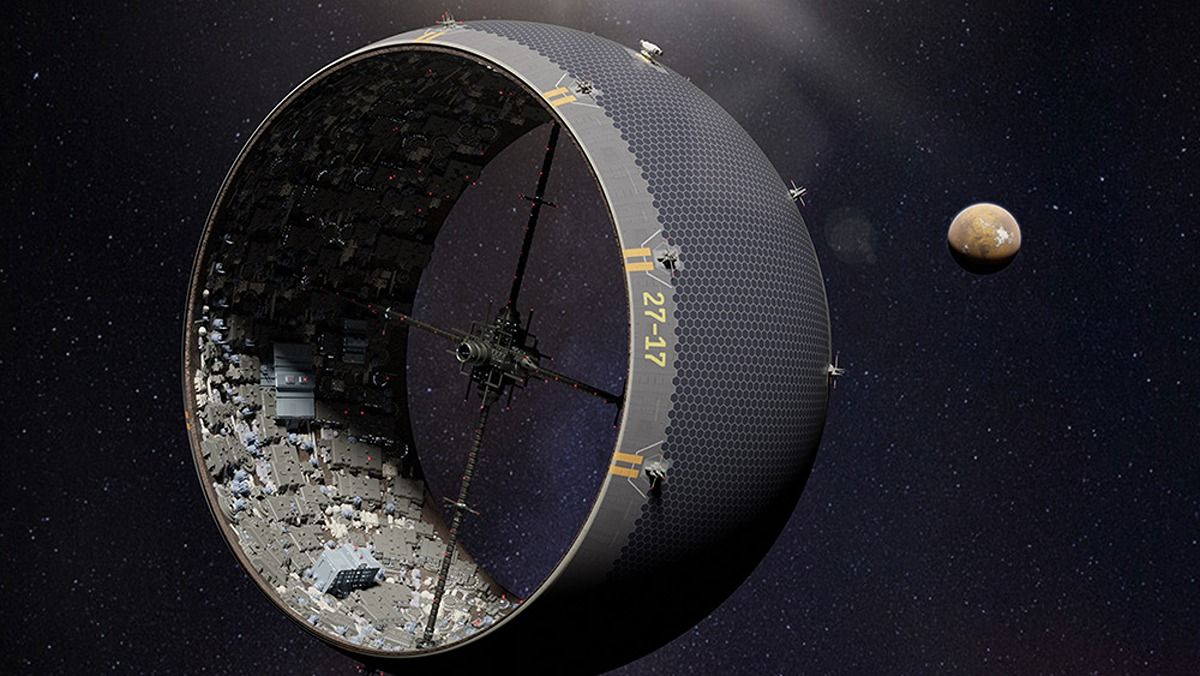This post may refer to COVID-19
To access official information about the coronavirus, access CDC - Centers for Disease Control and Prevention.

www.space.com
We could build space cities in asteroids like in sci-fi with this wild concept
A futuristic study suggests that a spinning, rubbly asteroid could support a massive space settlement the size of Manhattan.
Science & Tech
A pandemic-induced "lockdown" project produced a new vision for how to build cities on asteroids.
The wild asteroid concept would see far-future humans gather up rock rubble in a massive bag made of nanofiber mesh, allowing future astronauts to build a habitat inside the loose asteroid bits as the rocks spin in space.
"This project started as just a way for physicists and engineers to blow off steam, set aside worldly stresses for a while, and imagine something crazy," Ph.D. candidate and study lead author Peter Miklavčič, who is based at the University of Rochester, said in a statement (opens in new tab).
The researchers suggest that future Manhattan-sized cities of 22 square miles (57 square kilometers) could be built on these space rocks, just like in science fiction, assuming the base asteroid is at least 1,000 feet (300 meters) across.
"We're taking a science fiction idea that has been very popular recently — in TV shows like Amazon's "The Expanse" — and offering a new path for using an asteroid to build a city in space," added co-author Adam Frank, who teaches physics and astronomy at Rochester, in the same statement.
The study team argues that if their concept indeed works, it would (eventually) allow for lower-cost exploration of the solar system and open up living off-planet to far more people than just billionaires.
That said, the launch infrastructure is not yet in place for rapid and affordable access to space, let alone any asteroid city-building materials; that may take a few decades at least to build, if not centuries.
The new study borrows from the oft-cited "O'Neill cylinder (opens in new tab)" concept, first proposed by physicist Gerard O'Neill in a 1972 NASA study. Simply put, the design includes two cylinders that rotate in opposite directions, inspiring billionaires like Blue Origin's Jeff Bezos (who made his fortune with Amazon) or SpaceX's Elon Musk. But past work has suggested that supplying the necessary materials from Earth would be quite costly.
Miklavčič studies the space rubble that often arises in asteroids, which can in many cases only be loosely held together by gravity. Since a rotating O'Neill cylinder would make such an asteroid fly apart, a flexible bag could be one solution to holding the materials in and allowing a stable base for a city.
The mesh bag would be made out of carbon nanofibers, which are lightweight and yet strong enough to hold together the asteroid rubble in a potential habitat. In theory, a spun-up asteroid inside a bag would fling its rocks into the sides, allowing the bag to expand and hold the rocks tight with the help of the nanofibers. The rubble peppering the bag's side would be held there by artificial gravity and would shield the inhabitants from space radiation.
While the study is literally 'out there,' the researchers emphasized all the technology is currently in place (albeit at an early stage) and that the science stands up.
"Obviously, no one will be building asteroid cities anytime soon, but the technologies required to accomplish this kind of engineering don't break any laws of physics," Frank said.
A study based on the research was published in January (opens in new tab) in Frontiers in Astronomy and Space Sciences, and highlighted by the university in December.
























































